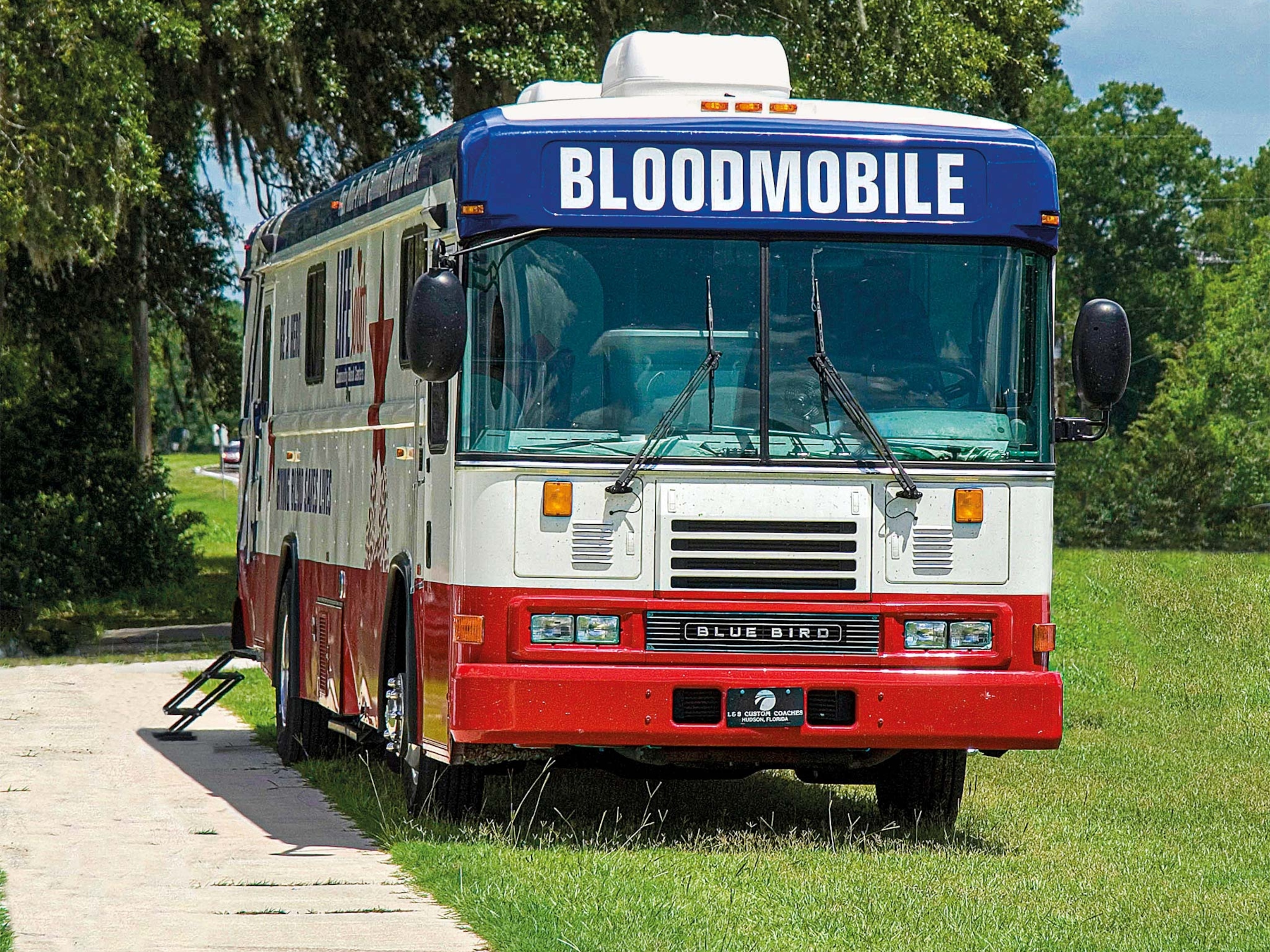
100 Years Ago, Alexander Graham Bell Predicted Life in 2017
In 1917, the telephone’s inventor gave a speech that foresaw our modern world, from commercial aviation to the finite supply of oil.

Alexander Graham Bell hated few things more than summertime in Washington, D.C. He usually escaped to his estate in Nova Scotia, but one year obligations forced him to stay in the humid capital. Sweltering in 100°F heat, he wondered why humans had figured out how to warm a house but not how to cool one—until now. Nearby, President Woodrow Wilson had installed an ice plant that lowered the temperature in the White House to 80 degrees. By the time Bell read about it in the newspaper, he had already outdone the president. The cold air pumping–contraption he’d devised had brought the temperature in his room that day down to a chilly 65 degrees “with a delicious feeling of freshness in the air.”
When 69-year-old Bell told this tale in a speech to the 1917 graduating class of McKinley Manual Training School, the students went wild with applause. The clapping became “so insistent,” a local paper reported, that he was forced from his seat to deliver a surprising encore. “Could postage stamps be used in transportation of persons?” Bell asked. He’d thought of charging a flat rate for public transport, but the cost of building additional roads was too high. Perhaps, he ventured, according to the paper, “the flying machine will be the solution.”
Bell’s speech—called “Prizes for the Inventor: Some of the Problems Awaiting Solution”—reflected on a century of progress and looked ahead with remarkable foresight. In it he marveled at the advances made in the past century: Gas lighting had evolved into electric bulbs, humans could “see our own hearts beat,” and automobiles replaced horse-drawn vehicles. He then went on to predict the commercial airplane, solar panels, and the need for renewable resources. Gilbert Grosvenor, Bell’s son-in-law and the editor of National Geographic magazine, asked for the text and published a revised version in the February issue. Now, one hundred years later, Bell’s predictions and warnings remain prescient.
Bell had been raised in an era when schools “made scholars rather than scientists,” he told the students at McKinley when he took the stage. But the past century had birthed extraordinary discoveries, from the telegraph to the photograph. “I, myself, am not so very old yet, but I can remember the days when there were no telephones,” said the inventor of the telephone to thunderous applause. As America’s entry into World War I loomed, he promised that “the man of science will be appreciated in the future as he never has been in the past.”
By his own measure Bell was at his intellectual peak. In the previous decade he’d worked on building the world’s fastest ship (it set the record in 1919), proposed renewable energy sources, and endlessly sketched flying machines (the device he described in an 1892 article resembled the helicopter invented 40 years later). The year after the Wright brothers received their patent, Bell’s kite lifted an associate to over 160 feet.
In 1915 he’d made the first coast-to-coast phone call; soon after, a man in Virginia spoke to a man on the Eiffel Tower in the first transatlantic transmission. Bell predicted a day when calls—and “any mechanical operation”—could be made without wires. He also foresaw the devices someday displacing their makers: “On every hand we see the substitution of machinery and artificial motive power for animal and man power.”

McKinley’s students were mesmerized. “He took the audience into his confidence and made them feel that he was unrolling to them the secrets of his scientific notebooks,” a newspaper reported.
Bell made daily additions to the legendary notebooks: sketches of inventions, musings, press clippings. At home in Nova Scotia, more than 30 men worked to make Bell’s ideas reality. Some were small comforts: a system of ropes to open and close the windows so he didn’t have to get out of bed while reading. Others were huge undertakings: Bell spent decades trying to breed sheep with more than two nipples.

In 1912 Bell had written in a notebook: “You can say that man has conquered the mystery of nature.” But just five years later at McKinley, he voiced concern about the abuse of nature. “We can take coal out of a mine, but we can never put it back. We can draw oil from subterranean reservoirs, but we can never refill them again,” he told the students. Given the world’s great consumption, he foresaw a day when the supplies would run dry.
While other scientists believed that dirty air would block the sun’s rays and cool down the planet, Bell was ahead of his time when he said he was “inclined to think we would have some sort of greenhouse effect.” As a solution, he proposed alcohol as an alternative fuel and sketched rooftop devices for collecting solar power from the sun.
“The most remarkable thing about Doctor Bell is that he is younger, in mind, than most men of half his age,” a friend of his was quoted as saying in 1921. The next year, and a few months after receiving his last patent, Bell died at age 75. During his funeral all 14,346,701 phones in America went silent for one minute in tribute to their inventor.
Related Topics
You May Also Like
Go Further
Animals
- This ‘saber-toothed’ salmon wasn’t quite what we thoughtThis ‘saber-toothed’ salmon wasn’t quite what we thought
- Why this rhino-zebra friendship makes perfect senseWhy this rhino-zebra friendship makes perfect sense
- When did bioluminescence evolve? It’s older than we thought.When did bioluminescence evolve? It’s older than we thought.
- Soy, skim … spider. Are any of these technically milk?Soy, skim … spider. Are any of these technically milk?
- This pristine piece of the Amazon shows nature’s resilienceThis pristine piece of the Amazon shows nature’s resilience
Environment
- This pristine piece of the Amazon shows nature’s resilienceThis pristine piece of the Amazon shows nature’s resilience
- Listen to 30 years of climate change transformed into haunting musicListen to 30 years of climate change transformed into haunting music
- This ancient society tried to stop El Niño—with child sacrificeThis ancient society tried to stop El Niño—with child sacrifice
- U.S. plans to clean its drinking water. What does that mean?U.S. plans to clean its drinking water. What does that mean?
History & Culture
- Meet the original members of the tortured poets departmentMeet the original members of the tortured poets department
- Séances at the White House? Why these first ladies turned to the occultSéances at the White House? Why these first ladies turned to the occult
- Gambling is everywhere now. When is that a problem?Gambling is everywhere now. When is that a problem?
- Beauty is pain—at least it was in 17th-century SpainBeauty is pain—at least it was in 17th-century Spain
- The real spies who inspired ‘The Ministry of Ungentlemanly Warfare’The real spies who inspired ‘The Ministry of Ungentlemanly Warfare’
Science
- Here's how astronomers found one of the rarest phenomenons in spaceHere's how astronomers found one of the rarest phenomenons in space
- Not an extrovert or introvert? There’s a word for that.Not an extrovert or introvert? There’s a word for that.
- NASA has a plan to clean up space junk—but is going green enough?NASA has a plan to clean up space junk—but is going green enough?
- Soy, skim … spider. Are any of these technically milk?Soy, skim … spider. Are any of these technically milk?
Travel
- What it's like to hike the Camino del Mayab in MexicoWhat it's like to hike the Camino del Mayab in Mexico
- Is this small English town Yorkshire's culinary capital?Is this small English town Yorkshire's culinary capital?
- This chef is taking Indian cuisine in a bold new directionThis chef is taking Indian cuisine in a bold new direction







